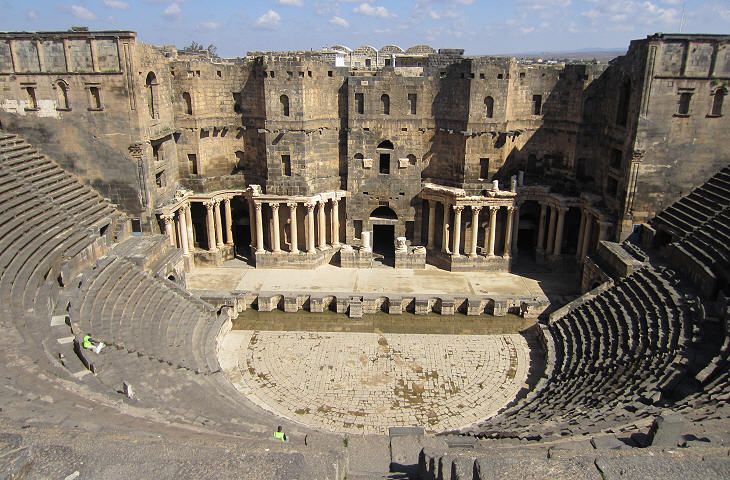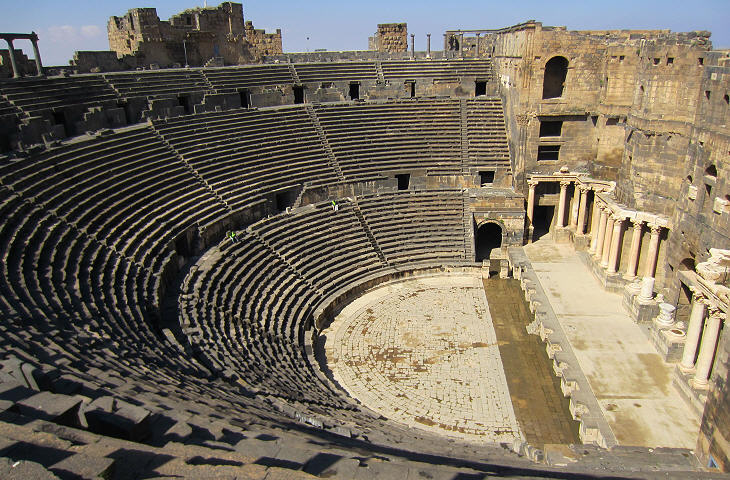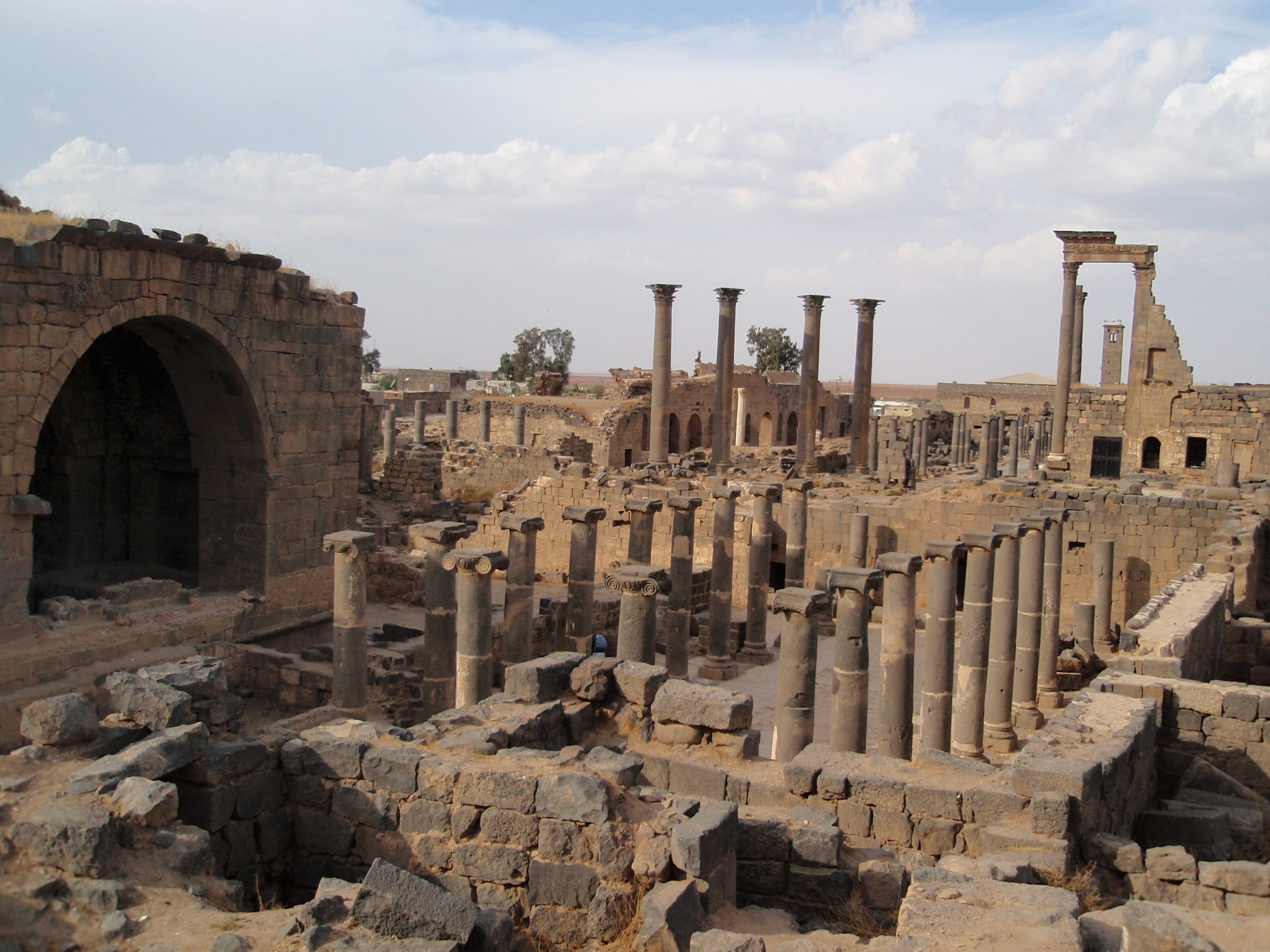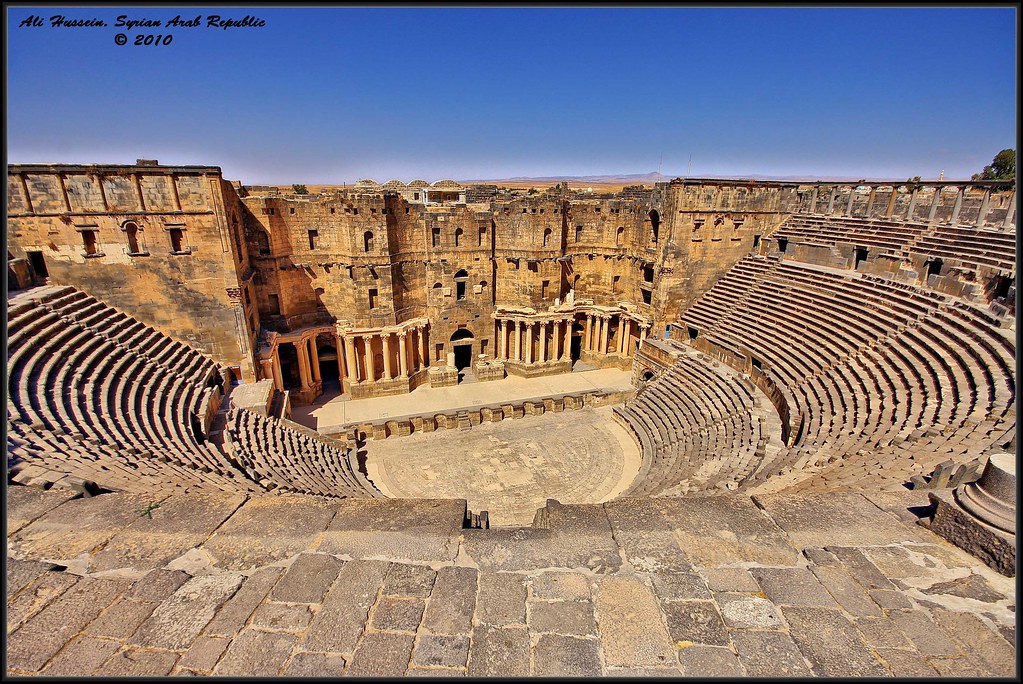Bosra
Government
Bosra Bosra or (Arabic بصرى, DMG Busra, Busra aš -SAM ) is a city in southwestern Syria in Daraa province within the region of Hauran.
Its population is 29 664 after a calculation of 2009.
History
Bosra is probably on the site of existing in the 2nd millennium BC Bronze Age Buṣrūna small state, which is mentioned in the Amarna letters. It was only in the 4th century BC, the city was mentioned as part of the Seleucid Empire resume writing. Since the 2nd century BC it belonged to the kingdom of the Nabataeans, which temporarily extended in the north to Damascus, and was 70-106 AD, whose capital. After the conquest by the Roman Emperor Trajan, the city as the entire kingdom of the Nabataeans was incorporated into the Roman Empire; since that time was also a Roman legion stationed ( Legio III Cyrenaica ). Collected in the year 106 the capital of the province of Arabia Petraea, she was under the name of Nova Traiana Bostra a market town for the Bedouins of the Eastern Desert and an important commercial center, home to the main roads converged to the Red Sea. Under Emperor Severus Alexander ( 222-235 ) the city was a colony ( Colonia ) and collected under Philip the Arab (r. 244-249 ) to the metropolis. In the 4th century it was considered a " big city ", which housed numerous ornate buildings, churches and theaters. The city was a bishopric. In the 6th century a five-aisled basilica was built, which was one of the largest in the Middle East. 634, the city fell into the hands of the Arabs and gradually lost its importance. During an earthquake in 1157, many buildings were destroyed.
In Arabic and mameluckischer time Bosra was a provincial capital. In the 13th century they built the Roman theater of a citadel with palaces. In the following centuries the assaults increased by Bedouin tribes against the sedentary farmers, traders, and by traveling pilgrims to Mecca. Trade and pilgrims moved over to a further west road, which stresses the importance declined as a trading and Bosra sank in the Middle Ages to a village.
The old town of Bosra was included in the World Heritage Site by UNESCO in 1980.
Sights of the city
The city offers numerous testimonies of its turbulent past. The best known and most impressive is the well preserved Roman theater, the - was built in the third century AD under the Roman Emperor Severus Alexander - like a lot of the other Roman testimonies. 15000 spectators could find a place here. Like other Roman theater has also this building a remarkable acoustics. The lower ranks and the Orchestra have been built into the ground in order to take the steep grades can statically. Good condition the building is especially so since it was not used in the post-Roman period as a quarry, but was expanded by the Arab rulers to the citadel. The Roman city extends to the foot of the theater in a northerly direction. Here are the remains of the baths, an impressive colonnaded street, which in ancient times was the main artery Bostras and the Kabyle sanctuary, whose former provision is unclear. Next to it is a certificate from the 6th century St. Sergius, Leontius and Bacchus Cathedral. In the north- east of the city the Mabrak -an- Naba Mosque, which was built in 1136 and named after the camel, which is said to have worn the first Quran copy to Syria stands. South of the Fatima Mosque is seen from the 13th century.
To the east of the city you can see the ruins of a palace, the foundations of which probably date from the time of the Nabataeans. Nearby is a large cistern (Arabic Birkat al - Hajj ), and not far away is the Yaqut Mosque with a Madrasa from the 13th century ( see illustration).
To the west of the old town there are the Lampentor ( Bab al- Kandil ), large underground storage spaces for local products and a few remains of the tetra pylon. Near the old market square is the largest mosque Bosras that Umari Mosque.
Attractions in the surroundings
In the vicinity of Bosra originating from the Roman period of Kharaba bridges and cross the Wadi Zeidi Djemerrin.










